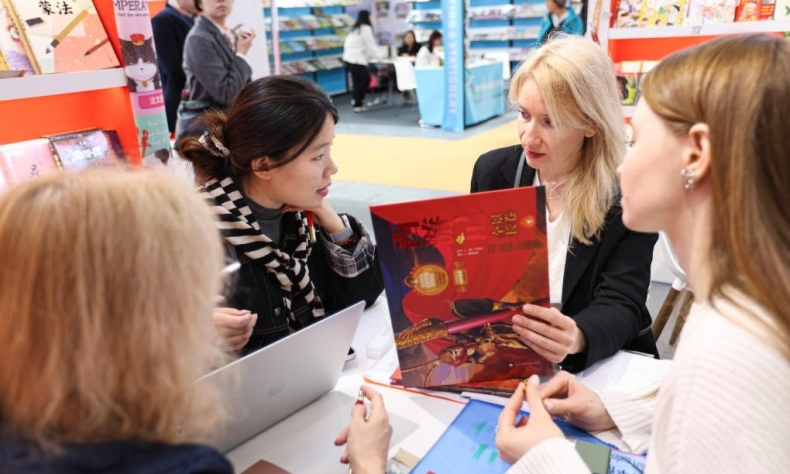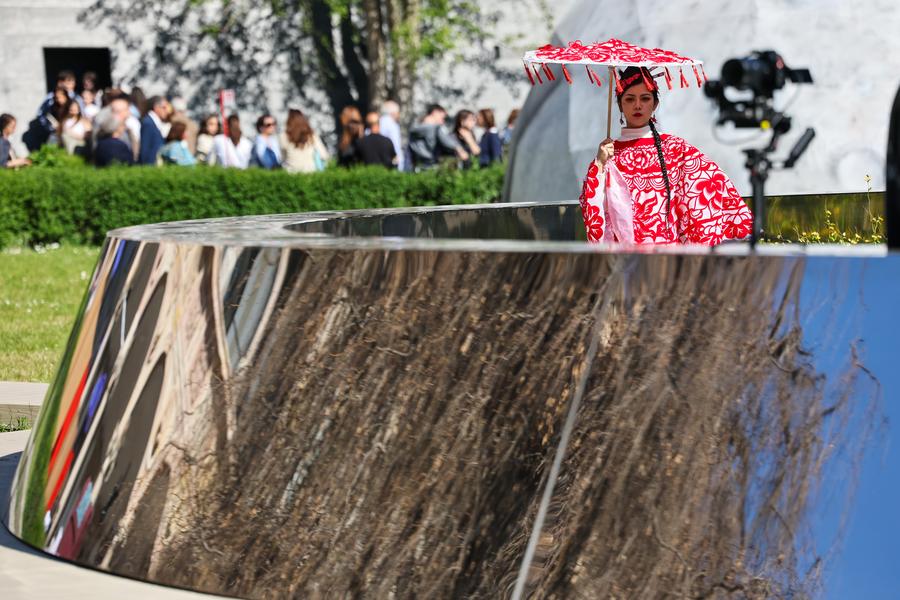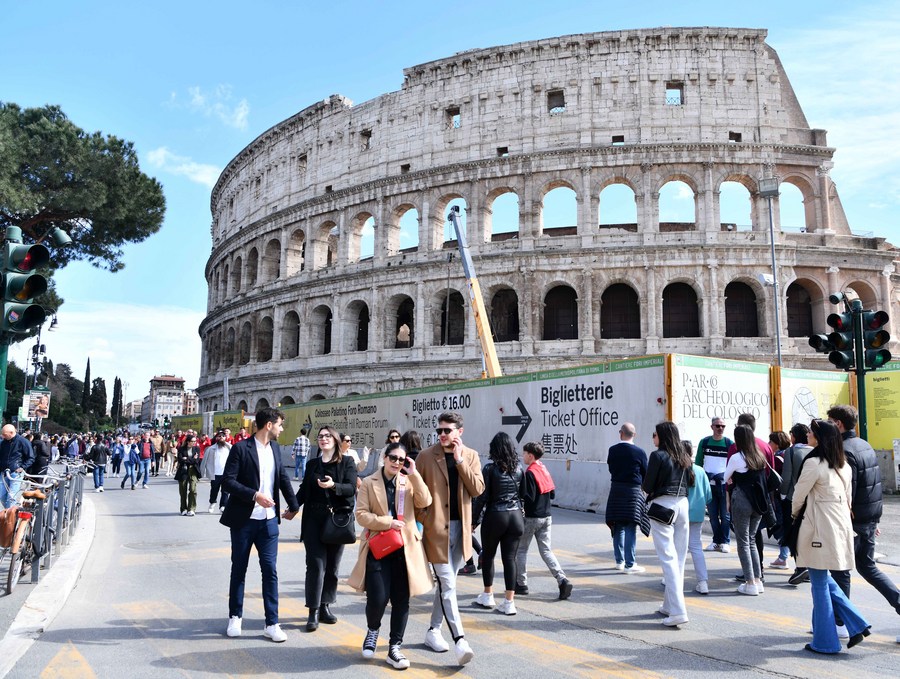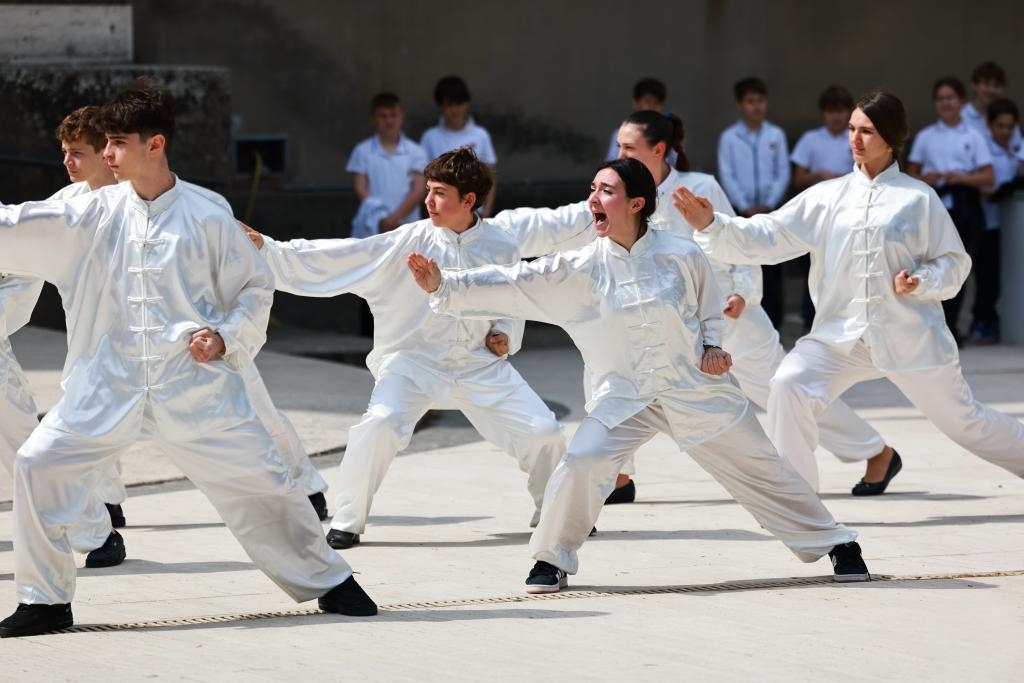Working Together for Inter-Civilizational Exchange and Mutual Learning

Italy is a key member of the EU, and the China-Italy relationship is an important aspect of the China-EU relationship.
The year 2025 marks the 50th anniversary of the establishment of diplomatic relations between China and the European Union (EU), as well as the 55th anniversary of diplomatic relations between China and Italy. Italy is a key member of the EU, and the China-Italy relationship is an important aspect of the China-EU relationship. Since I was appointed to be the Chinese ambassador to Italy two years ago, I have witnessed and contributed to the fruitful results in exchanges and cooperation between our two countries across various fields. During this process, I gained a deep understanding of the China-Italy friendship, which has a strong historical foundation and solid public support.
People-to-people exchanges have always been an important pillar of our bilateral relations. Both ancient civilizations, China and Italy respect, appreciate, and learn from each other, setting an example for developing relations between countries with different social systems and cultural backgrounds.
A time-honored friendship
Over 2,000 years ago, Zhang Qian (164-114 B.C.) made two diplomatic missions to Central Asia, and opened up the Silk Road that connected Chang’an, today’s Xi’an and capital of ancient China’s Western Han Dynasty (206 B.C.-24 A.D.), in the East with Rome in the West. Over the following centuries, many Chinese and Italian people distinguished themselves throughout the interactions between the East and the West. Among them was Gan Ying (lifespan undocumented), who was sent by the Eastern Han (25-220) emperor on a mission to the Roman Empire to find out more about it; Marco Polo, whose travelogue sparked the first “China Fever” in the West in history; Xu Guangqi (1562-1633) and Matteo Ricci (1552-1610), who translated Euclid’s Elements into Chinese; and Giuseppe Castiglione (1688-1766), who left behind many masterpieces like One Hundred Horses when working as a court painter in the Qing Dynasty (1644-1911). These examples are compelling evidence of the long-standing friendly ties between China and Italy.
As President Xi Jinping noted, “Our two countries have embraced the principles of mutual respect, mutual learning, mutual trust, and mutual understanding in our interactions, principles that underpin our long-lasting, ever-strong friendship.”
In the new millennium, more champions of China-Italy friendship are emerging like Professor Tian Dewang who translated Dante Alighieri’s The Divine Comedy in his 70s; Professors Giuliano Bertuccioli and Federico Masini who authored Italia e Cina (Italy and China); and Roman law expert Oliviero Diliberto who led a team to translate the first Italian version of the Civil Code of the People’s Republic of China. The contribution of each of these individuals has helped build bridges for exchanges and cooperation between our two countries, writing a new chapter in China-Italy friendship.
Cultural exchanges connecting East and West
Cultural cooperation between China and Italy has always been at the forefront of China-EU relations. The two countries have maintained frequent, close exchanges in fields such as museum, painting, music, and film making, displaying the appeal of their respective cultures while appreciating the beauty of the other’s.

Last year, the two countries hosted a series of major cultural events to commemorate the 700th anniversary of Marco Polo’s passing. During President Sergio Mattarella’s visit to China in November 2024, the third China-Italy Cultural Cooperation Mechanism Conference was held, with nearly 100 representatives from both countries present. Chinese President Xi Jinping and his wife Peng Liyuan, together with President Mattarella and his daughter Laura Mattarella, watched a musical concert featuring the works of Giacomo Puccini at the National Centre for the Performing Arts in Beijing. Prime Minister Giorgia Meloni and President Mattarella respectively attended the opening and closing ceremonies of the exhibition themed A Journey of Knowledge: The Travels of Marco Polo and Its Legacy between East and West at the China Millennium Monument in Beijing.
In Italy, China held exhibitions on cultural relics and Suzhou silk last year. Chinese pianists Lang Lang and Ju Jin and composer Tan Dun gave concerts in Rome, which were all warmly received by local audiences. Chinese designers and brands also shined bright at the Venice Biennale and Milan Fashion Week.
This year, a series of cultural activities have been rolled out in celebration of the 55th anniversary of diplomatic relations between China and Italy. At the beginning of the year, an exhibition of Chinese contemporary artworks opened at the National Gallery of Modern and Contemporary Art in Rome, Italy. This was followed by the “Archaeology Tells of Apulia” exhibition at China (Hainan) Museum of South China Sea, and the Sino-Italian Music Performance Season at the Shanghai Spring International Music Festival.
During the coming months, the National Museum of China and National Archaeological Museum of Naples will hold exchange exhibitions, and the musical The Divine Comedy from Italy is set to kick off its China tour. These cultural events will further deepen the friendship between the two countries.
Natural partners in historic heritage preservation
Cooperation in cultural heritage protection is another example of the friendly ties that China and Italy enjoy. During President Xi Jinping’s visit to Italy in 2019, Italy returned 796 pieces of Chinese cultural relics, marking a milestone in international cooperation in cultural heritage repatriation. During President Mattarella’s visit to China in 2024, Italy returned 56 more pieces of Chinese cultural relics, some of which date back over 4,000 years ago. The two heads of state viewed some of these returned artifacts, including the Majiayao pottery vessels, at the Great Hall of the People in Beijing, highlighting the mutual respect each country shares for the other’s civilization.
In the future, China and Italy will continue to collaborate on the protection, restoration, research, and exhibition of these returned cultural relics, advancing exchange and mutual learning between the two civilizations.
As the two countries with the most UNESCO World Heritage Sites, China and Italy have pioneered a twinning relationship between their respective sites, setting an example for other countries in this area. So far three pairs of heritage sites have established a twinning relationship — the West Lake in Hangzhou and the City of Verona, Honghe Hani rice terraces in Yunnan and vineyard landscapes of Langhe-Roero and Monferrato in Piedmon, and the Summer Palace in Beijing and the Villa d’Este in Tivoli. These partnerships not only deepen China-Italy cooperation in cultural heritage protection and restoration but also promote collaboration in other areas, such as regional economy and trade, education, and tourism.

Technological exchanges
Scientific and technological exchange is an important aspect of inter-civilizational dialogue and an essential means to promote the common progress of humanity. Italy was one of the first Western countries to sign a scientific and technological cooperation agreement with China. The China-Italy Science, Technology and Innovation Week, initiated in 2010, has already successfully held 13 sessions. Having facilitated over 6,200 technological cooperation programs between the two sides, it has become the highest-level and largest event for technological exchanges between China and Europe.
With a long history of and solid foundation for cooperation in environmental protection, China and Italy have made outstanding achievements in areas, such as clean-energy materials and technologies, energy efficiency, responses to climate change, and biodiversity conservation. Chinese companies participated in the construction of Italy’s first offshore wind farm, and a leading Italian manufacturer of photovoltaic panels set up a research & development center in China. These moves strongly support the green transition in both countries and truly benefit the two peoples.
Aerospace is another key area of scientific and technological cooperation between China and Italy. Italian scientists participated in the development of China’s first Dark Matter Particle Explorer Wukong (Monkey King) and China’s first seismo-electromagnetic satellite Zhang Heng 1. The Chang’e 6 lander carried a passive laser retroreflector from Italy, which helped the Chinese probe collect the first ever samples from the far side of the moon. The significance of such cooperation between our two countries goes far beyond the technological sector, leading to big strides in humanity’s endeavors to understand the universe.
During President Mattarella’s visit to China, President Xi presented him with a gift of lunar soil, a symbol of the mutual trust between the two countries and the spirit of sharing in their aerospace cooperation. When working at the International Space Station, Italian astronaut Samantha Cristoforetti posted on twitter lines from the 4th-century Chinese poem Preface to Poems Composed at the Orchid Pavilion: “Looking up, I see the immensity of the cosmos; bowing my head, I look at the multitude of the world. The gaze flies, the heart expands, the joy of the senses can reach its peak, and indeed, this is true happiness.” With this text, she also shared photos of the Bohai Sea and scenes of Beijing seen from outer space. This anecdote exemplifies the confluence of cultural understanding and scientific exploration.
Youth exchanges
Young people are the most vibrant force driving social progress and are shaping the future of Sino-Italian relations. In 2019, President Xi Jinping wrote a letter of reply to students of Rome Convitto Nazionale Vittorio Emanuele II, an Italian boarding school, encouraging them to work as envoys of friendship between China and Italy. In 2023, the school organized the largest summer camp since 2020 in China, where over 170 students experienced Chinese culture first-hand.

During President Xi’s visit to Europe last year, he proposed to double the scale of European youth exchanges in China over the following three years. In March, 106 students from 17 Italian universities went on a 10-day visit to the Chinese cities of Xi’an, Chengdu, and Beijing. I am proud that they are not only the first group from Italy but also from Europe as a whole to visit China after President Xi made the proposal. At the ceremony held at the Chinese embassy before their departure, the students expressed their excitement about their upcoming trip during which they would see the Terracotta Warriors, hug giant pandas, and climb the Great Wall. Now their dreams have come true.
The Piccolo Coro dell’Antoniano, an Italian choir of children, builds bonds between China and Italy with songs. It has made several China tours, during which they performed popular Chinese songs. It has a big fan base among Chinese children.
China has also become the largest source of international students in Italy, and the number of Italian students in China has remained within the top five among European countries. Italy was one of the first European countries to start research and teaching in the Chinese language, and in 2016, it incorporated Chinese language education into its national education system. Meanwhile, more than 20 Chinese universities are now offering Italian language programs.
During President Mattarella’s visit to China last year, the two countries officially established a mechanism for regular consultation between their education ministers. And leaders of nearly 50 renowned universities from both countries gathered at Peking University in Beijing to attend the China-Italy University Rectors Dialogue. During Prime Minister Meloni’s visit to China last year, the two countries signed a new round of educational cooperation plans, under which they will continue to deepen cooperation in higher, basic, and vocational education, support language teaching in both countries, and jointly nurture more talents like Marco Polo in the the new era.
Both China and Italy have time-honored histories and splendid civilizations. President Xi pointed out that the world today is undergoing changes unseen in a century. To resolve prominent problems faced by humanity, we need to both employ material means and harness the power of justice and sincerity. During his visit to China, President Mattarella emphasized that mutual respect and open dialogue are fundamental elements for helping countries achieve peace and prosperity, while cultural exchange is an important pillar that supports dialogue and understanding.
Moving forward, China is willing to work with Italy to maintain the tradition of openness and inclusiveness, champion the power of culture in inspiring people, and promote shared values. Together we will allow cultural exchanges to transcend estrangement, mutual learning to transcend clashes, and coexistence to transcend feelings of superiority. Through higher-level exchanges and cooperation, we will write a new splendid chapter in China-Italy and China-EU relations.
Jia Guide is Chinese ambassador to Italy.
 Facebook
Facebook
 Twitter
Twitter
 Linkedin
Linkedin
 Google +
Google +










